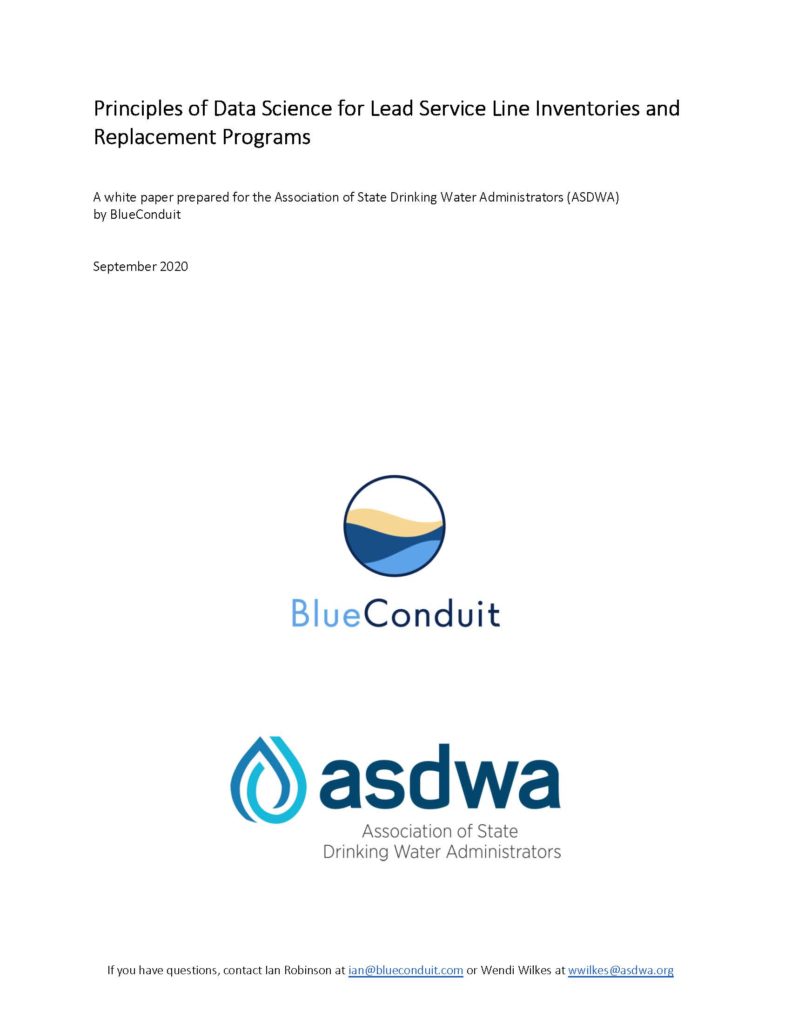ASDWA & BlueConduit Release White Paper on LSL Data Methods
Substantial uncertainty still surrounds the nation’s water systems regarding the number and locations of lead service lines (LSLs). This uncertainty stems primarily from inadequate records and data. The accuracy of these records carries significant implications for utility operations, public health, regulatory compliance, and long-term asset management. In light of the importance of lead service line inventories expected in the final Lead and Copper Rule Revisions, BlueConduit in partnership with ASDWA developed a white paper to outline important considerations for state regulators and utility leadership when using statistical and predictive methods for LSL inventory and replacement.
The paper includes five guiding principles for using data science to better characterize uncertainty LSL inventories:
- Clean data management and organization;
- Not accepting all historical records as truth;
- Conducting a representative randomized sample of service lines;
- Transparency in public outreach and reproducibility; and
- Accuracy on held-out sample.
These principles can be used by regulators to encourage water systems to plan strategically, make data-driven decisions, set budgets and requests for funds, build capacity in some skill areas, communicate with the public and build trust, and, most importantly, continue to protect the health of all individuals in the system.
The paper also includes examples from BlueConduit and the University of Michigan team’s work with Flint, Michigan that show how these methods were used by the city and regulators in practice as part of Flint’s LSL replacement program.

